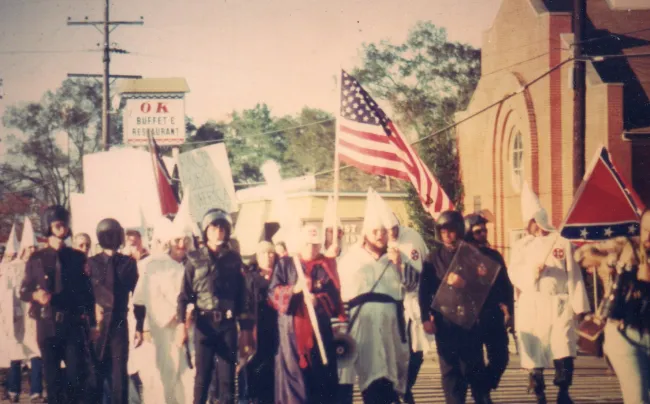Vidor, Texas: Confronting Its Racist Past and Efforts to Restore Its Reputation
Vidor, Texas, a small town in Orange County, has a history that’s impossible to ignore. For decades, it’s been synonymous with racial intolerance and exclusion. Once a notorious sundown town, Vidor’s name is forever linked to the Ku Klux Klan and a brutal culture of systemic racism. But in recent years, the town has found itself at a crossroads: Can it truly shed the dark stain of its past and build a future that embraces diversity? This blog takes a hard look at Vidor’s ugly history, its lasting scars, and the attempts to rewrite its story.
The Sinister Legacy of Vidor
Vidor’s reputation as a sundown town isn’t just a relic of the past—it’s the defining feature of its history. Sundown towns were places where Black people were actively driven out, either through intimidation, violence, or outright laws that made them unwelcome after dark. Vidor didn’t just play along; it embraced this vicious tradition, with reports of signs warning Black people to get out before nightfall.
The Ku Klux Klan didn’t just have a presence in Vidor—they ran the town. Cross burnings, lynchings, and terrorizing the Black community were all part of maintaining an all-white population. In 1993, Vidor became a national embarrassment when a federal court ordered the desegregation of public housing. The town didn’t take it lying down—the Ku Klux Klan organized protests, and when Black families dared to move in, they were bombarded with threats, including a bomb scare. The message was clear: Vidor wasn’t ready for change.
The Enduring Impact of Racism
Vidor’s racist legacy has left deep, lasting scars. The 2020 census showed just 39 Black residents out of 9,789 total—an undeniable reflection of the town’s exclusionary past. Vidor’s reputation as a sundown town continues to haunt it, with many people of color avoiding the town altogether due to fears of harassment or worse. It’s a place where the ghosts of racism are still very much alive, and the town’s image remains tarnished.
Can Vidor Ever Move On?
In a shocking turn, Vidor is trying to change. But can a town with such a dark history really reinvent itself? There are signs of progress, albeit slow. Black Lives Matter rallies in recent years have drawn diverse crowds, signaling that some residents are ready to break from the past. Younger generations, more aware of the town’s ugly legacy, are pushing hard to make Vidor a place where racism doesn’t rule.
The town has even taken steps toward integrating its public housing and promoting diversity. But let’s be clear—these efforts are barely a dent in a long history of racial exclusion. The question remains: Can Vidor ever truly escape its past, or will it always be haunted by the sins of its forefathers?
Conclusion
Vidor, Texas, is a reminder of the ugly truth that some towns aren’t just stuck in the past—they actively fight to stay there. While the town has made some half-hearted attempts to confront its history, its reputation as a sundown town continues to linger like a dark cloud. Only time will tell if Vidor can truly rewrite its story, but the road to redemption will be long, and the scars of racism won’t fade easily. It’s up to the residents of Vidor to decide: Will they confront their past and build a future that’s truly inclusive, or will they let the ghosts of racism continue to control their town’s destiny?
